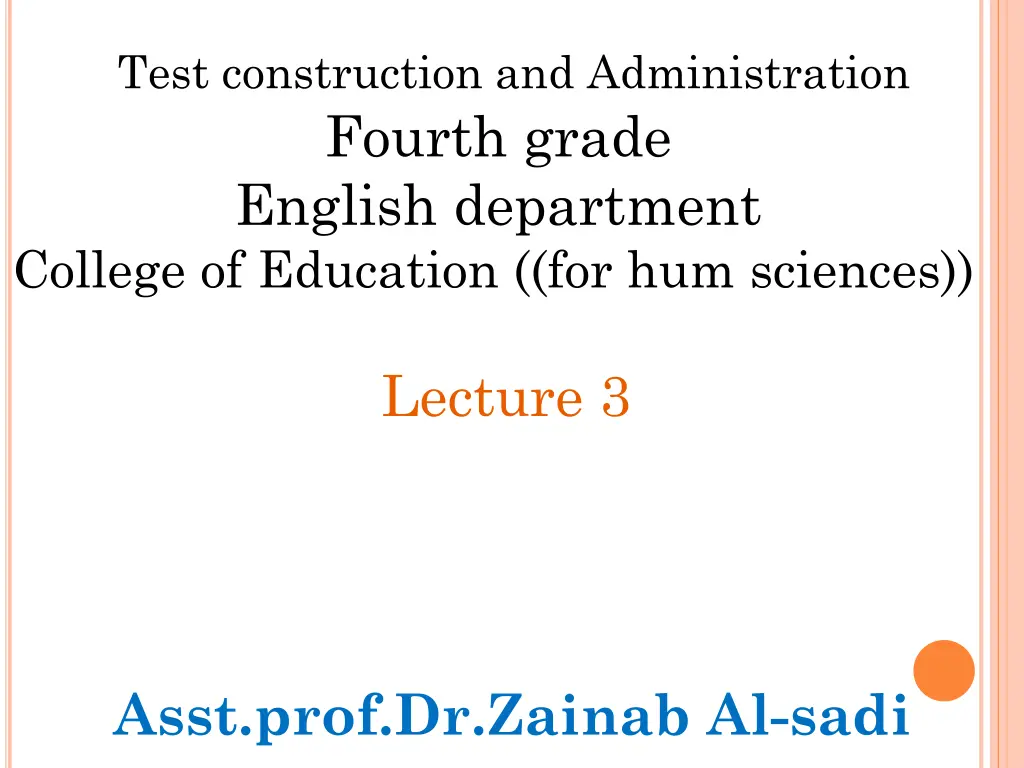
Effective Test Construction & Administration Guidelines
Learn about the essential steps involved in constructing and administering teacher-made tests, including planning, item preparation, reviewing, scoring, reproduction, administration, result analysis, and using the results effectively. Discover valuable insights from Asst. Prof. Dr. Zainab Al-Sadi in the context of fourth-grade English education at the College of Education.
Download Presentation

Please find below an Image/Link to download the presentation.
The content on the website is provided AS IS for your information and personal use only. It may not be sold, licensed, or shared on other websites without obtaining consent from the author. If you encounter any issues during the download, it is possible that the publisher has removed the file from their server.
You are allowed to download the files provided on this website for personal or commercial use, subject to the condition that they are used lawfully. All files are the property of their respective owners.
The content on the website is provided AS IS for your information and personal use only. It may not be sold, licensed, or shared on other websites without obtaining consent from the author.
E N D
Presentation Transcript
Test construction and Administration Fourth grade English department College of Education ((for hum sciences)) Lecture 3 Asst.prof.Dr.Zainab Al-sadi
The constructing of an educational test that is a teacher-made test includes the following step: 1- Planning the test: Effective testing requires careful Planning and the balance or a de quacy of the test content, There are two steps which provide a guide to the planning el language tests. a. Determining the course objectives. b. Designing the test. 2- preparing the items and writing Directions This step means that we may omit some items or the material that the students has mastered at a previous stage of learning, we could concentrate on the new range of activities that were taught in the course at later stage .
3- Reviewing the test items. This step means that the items should be et aside for a day or two before being reviewed the teacher. The test should be submitted acolleague who is experienced with the. 4- Setting A scoring scheme A scoring scheme should be developed for the test for the purpose of objectivity and reliability. 5- Reproducing the test. It means the Presentation of the test paper itself. It should be printed so as to appear neat and tidy. It should be free from misspelling , omission and corrections.
6 Adminstrating the test. It includes the following step. a. Selecting the testing room. b. checking the materials . c. Reading the test in advance. 7 Analyzing the results. The teacher's task is to calculate the number of students who have responded correctly to the test items and reach the required level. 8 using the Results. This step helps to Pinpoint the Problematic items some students fail to answer correctly and diagnose their specific weaknesses.






















